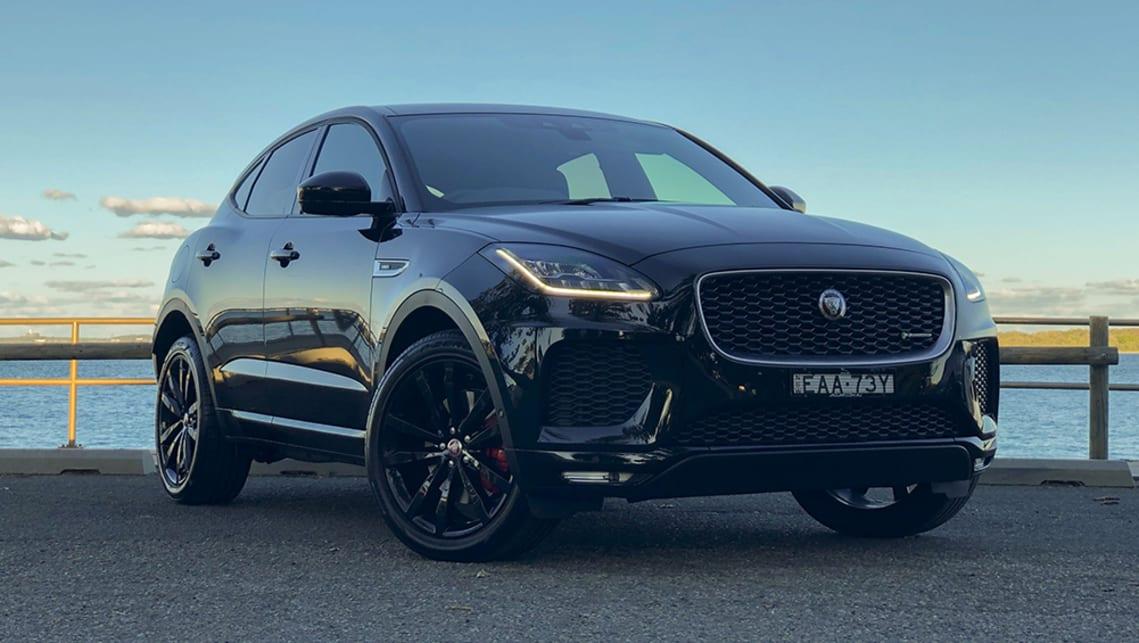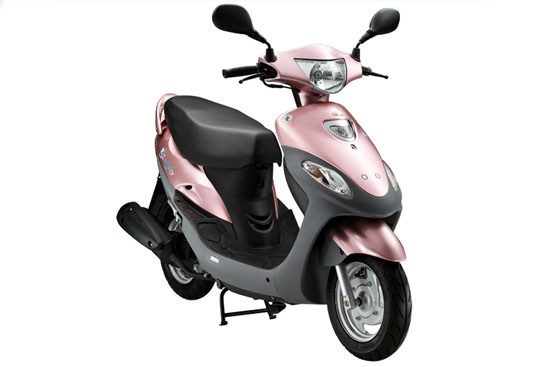
Review of the Jaguar E-Pace 2019: R-Dynamic D180
Content
- Does it represent good value for money? What functions does it have? 7/10
- Is there anything interesting about its design? 8/10
- How practical is the interior space? 7/10
- What are the main characteristics of the engine and transmission? 8/10
- How much fuel does it consume? 7/10
- What safety equipment is installed? What is the safety rating? 7/10
- How much does it cost to own? What kind of guarantee is provided? 7/10
- What is it like to drive? 7/10
- Verdict
- Is the E-Pace as convincing as Peter thinks? Do you even know that it exists? Tell us what you think in the comments below.
For years, if you wanted a sleek British SUV, you had a simple choice: one car; Range Rover Ewok. It's a fine car and all (and it's just moved into its second generation), but if you're not interested in any of the growing number of Germans and want this particular Rangie, you're stuck.
The jaguar is also stuck. With a sister brand established on SUVs before they were even called that, it seemed like a no-go area for Jag, and it wasn't until after the F-Pace that the hopping cat could even start encroaching on the market that was growing. deep love for cars on stilts.
Eighteen months ago, the E-Pace finally hit the road. Built on the hugely successful Evoque platform, the sleek and compact car has finally made its way into the Jaguar lineup, giving buyers a second, very British choice.
But it's a choice that hasn't captivated too many people yet, and we wanted to find out why, and why not.
Our car had optional 20-inch wheels wrapped in Pirelli P-Zeros, as well as a Performance package that adds big brakes with red brake calipers.
| Jaguar E-Pace 2019: D180 R-Dynamic SE AWD (132 kW) | |
|---|---|
| Safety Rating | |
| engine's type | 2.0 L turbo |
| fuel type | Diesel |
| Fuel efficiency | 6l / 100km |
| Landing | 5 Places |
| Price from | $53,800 |
Does it represent good value for money? What functions does it have? 7/10
The E-Pace fell victim to Jaguar's wildly complex range structure, and the company vowed to address the issue after its new local managing director understandably asked why on earth we needed a huge number of different options.
You can choose from six engine options and four trim levels, and add the R Dynamic styling package. My Jag this week was the E-Pace D180 SE R-Dynamic which starts at $65,590.
Our car had optional 20-inch wheels wrapped in Pirelli P-Zeros, as well as a Performance package that adds big brakes with red brake calipers. (Image: Peter Anderson)
For that you get an 11-speaker stereo system, 19-inch alloy wheels, dual-zone climate control, rearview camera, keyless entry, front, rear and side parking sensors, cruise control, power front seats, satellite navigation, LED headlights , leather seats. , automatic parking, electric tailgate, power supply for everything, automatic headlights and wipers and spare part to save space.
The Meridian-branded stereo features a 10.0-inch Jaguar-Land Rover TouchPro touchscreen. This is a pretty good system in 2019 after a bad start a few years ago. Entering sat nav is still a headache (not literally, it's just slow), but it's clear, easy to use, and includes Apple CarPlay and Android Auto.
It comes with LED headlights and automatic headlights. (Image: Peter Anderson)
Is there anything interesting about its design? 8/10
Jaguar calls the car smaller than the F-Pace a "cub." Because it's a small Jaguar. Take it?
Interestingly, this is not just a shriveled F-Pace, but a sporty F-Type when viewed from the front. The headlights are similar to F-Type SUVs with the signature J shape. Flanking the large, bold grille and large brake ducts, it looks like Jaguar was aiming to accentuate the S in the SUV. This theme continues in profile, with a dashing-looking roofline meeting a beefy rear end that looks gleaming in three-quarter rear. I think it looks better than the handsome F-Pace.
One gets the impression that Jaguar sought to emphasize the letter S in the SUV. this theme continues in profile, with a sweeping roofline meeting a muscular rear end. (Image: Peter Anderson)
The R Dynamic Pack darkens most of the chrome and adds black wheels.
Inside, everything is modern but not overly exciting, though it's worth noting the F-Type influence throughout, including a more conventional shifter, as opposed to the showy, rising rotary shifter of other Jags. Everything is clear and easy to use, although the gray dashboard plastic can be a bit overwhelming without any wood or aluminum specks to ruin it.
The inside is modern but not overly exciting. (Image: Peter Anderson)
How practical is the interior space? 7/10
Since it's based on the Evoque, it's no surprise that the rear seats aren't exactly amazing, but they'll do the same job as, say, a Mazda CX-5. So the space is solid, though not impressive, with good legroom and headroom for people up to 185cm tall (yes, son number one). The rear seats have their own air conditioning vents, four USB ports and three 12V outlets for charging.
The front and rear seats each have a pair of cupholders for a total of four, and a decent-sized bottle will fit in the doors. Trunk space starts at 577 liters with the seats folded (gut guessing that's the rooftop figure), and that figure rises to 1234 liters when the seats are folded down. The trunk is well shaped, with vertical walls on both sides, without protrusions of the wheel arches.
What are the main characteristics of the engine and transmission? 8/10
The D180 is the second of three Ingenium diesel engines. All of them have a volume of 2.0 liters, and the D150 and D180 are equipped with a single turbo. The D180 puts out 132kW and 430Nm of torque and sends it through a nine-speed ZF automatic transmission.
All E-Paces available in Australia are all-wheel drive, and in that guise they get you from 100 to 1800 mph in over nine seconds, which isn't bad for a car weighing XNUMX kg.
The D180 puts out 132kW and 430Nm of torque and sends it through a nine-speed ZF automatic transmission. (Image: Peter Anderson)
How much fuel does it consume? 7/10
The ADR-approved fuel sticker says you'll get 6L/100km combined, emitting 158g/km. A week of suburban driving and moderate highway driving yielded a claimed 8.0L/100km, which was no surprise given the car's weight.
What safety equipment is installed? What is the safety rating? 7/10
E-Pace leaves Austrian Magna-Steyr factory with six airbags (another under the hood for pedestrians), rearview camera, front AEB, traction and stability control, brakeforce distribution, lane departure warning, lane keeping assist movement and reversing. – traffic warning.
That's not a bad result for a Jaguar, even with the SE badge.
To this list, you can add three points of the top cable and two ISOFIX anchorages.
In 2017, the E-Pace received five ANCAP stars.
Warranty and safety rating
Basic Warranty
3 years / 100,000 km
guarantee
ANCAP Safety Rating
How much does it cost to own? What kind of guarantee is provided? 7/10
As is the case with the rest of the premium manufacturers, Jaguar sticks to a three-year 100,000 km warranty with the appropriate roadside assistance system. It seems odd that in five years no one has broken at this premium level yet, but it's only a matter of time before they do.
You can buy another one or two years of warranty when buying a car.
You can also purchase a service plan that covers five years of service. For diesel vehicles, this also covers 102,000 km and costs $1500 (petrols are the same price but for five years / 130,000 km). Jaguar loves to see you every 12 months or 26,000 km (gasoline is an amazing 24 months / 34,000 km).
What is it like to drive? 7/10
I was itching to ride the E-Pace on Australian roads, and I also wanted to ride the diesel. The only E-Pace I've driven was on the brilliantly narrow and twisty roads of Corsica, and it was a full P300. Australian roads are a whole different matter - compared to Corsican roads, mostly brilliantly maintained, and of course, a low-powered diesel might well reveal the possible flaws of the massive chassis.
As soon as I got behind the wheel of the E-Pace, I remembered how good it was to drive. Well-weighted steering, good visibility in most directions, comfortable seating and a comfortable ride. Again, this looks more like an F-Type than an F-Pace, except you won't be able to see the bottom of the E-Pace trailer.
The D180 had a slightly bigger start than I expected given its modest 132kW output. It helps to have nine gears to make the most of it and, for once, the ZF nine-speed was not the disaster I found in several other cars. I was a cautious optimist that he was better in the E-Pace, and a week with him proved that this was a step forward. The Ingenium diesel is smooth and quiet, and once you're on fire, you'll have pretty decent power for overtaking or rush hour acrobatics.
Space is solid, if not impressive, with good legroom and headroom for people up to 185cm tall (yes, son number one). (Image: Peter Anderson)
What was also nice was how well the ride transitioned to Australian roads. Even on 20-inch alloy wheels, it handled the potholes and ruts of Sydney roads very well. It's firm - don't really expect a soft ride from any Jag - but not emergency or muddy.
Obviously, the diesel isn't much of a delight to the ears, and while the nine-speed is good, it's still not as good as the eight-speed ZF. And of course, if you really push the E-Pace, you start to feel the weight, but it doesn't really happen until you hit it.
I still prefer the petrol-powered E-Pace, but if I were handed a diesel, I wouldn't be upset.
The E-Pace is really sporty, though not particularly fast in D180 guise. (Image: Peter Anderson)
Verdict
The E-Pace is a great alternative to any of its similarly priced competitors from the UK and Germany. Nothing else looks even remotely like it, and few badges are as evocative as that cat jumping through the back door. Jaguar makes the best cars it has ever made and the E-Pace is also one of the best cars.
It's really sporty, though not particularly fast in D180 guise. The SE spec is pretty good, even if it's missing a couple of obvious things that are expensive to add (such as blind spot monitoring) when you check the box.
The only embarrassing thing about the E-Pace is that I don't see them on the road that often.
Is the E-Pace as convincing as Peter thinks? Do you even know that it exists? Tell us what you think in the comments below.

